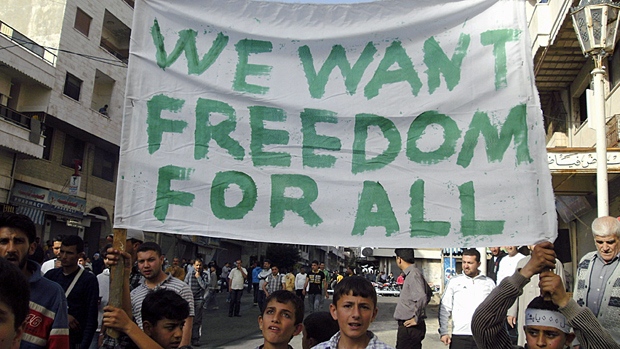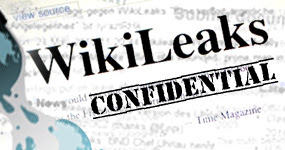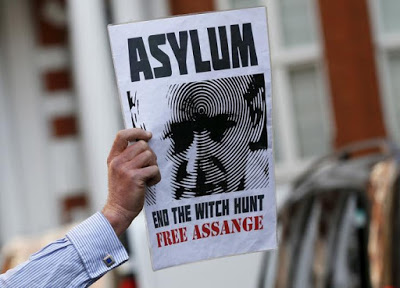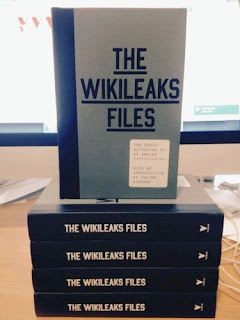US Planned to Destabilise Syria Through Sectarian Warfare Since 2006
show Washington backing of regime change is a major problem. The cables also
show how Honduras, under the government of President Manuel Zelaya, became an
enemy state for becoming too friendly with other left governments.
By
Mark Weisbrot
07, 2015
 |
| Assad – the Syrian dictator that the US has sought to overthrow since 2006 – hence the American’s anger with the Russians |
for understanding current events comes, not surprisingly, from sources that
were intended to be shielded from the public. From November 2010 to September
2011, more than 250,000 communications between U.S. diplomats that were never
meant to see the light of day were made public. They are available at WikiLeaks, the nonprofit
media organization that accepts confidential information from anonymous sources
and releases it to news sources and the public. A number of researchers have
put together a treasure trove of information and analysis that can be immensely
clarifying. (The recently released book from this research, published by Verso, is “The
WikiLeaks Files: The World According to U.S. Empire.”)
international news because of increased Russian military intervention as well
as a surge of some 500,000 refugees from the region arriving in Europe. Why has
it taken so long for Washington to even begin — yes, it is unfortunately just
beginning — to reconsider the policy of requiring Syrian President Bashar
al-Assad to agree to resign before any meaningful negotiations can take place?
After all, any diplomat could have told the White House that demanding the
political suicide of one party to a civil war as a condition for negotiations
is not how civil wars end. Practically speaking, this policy has been a
commitment to indefinite warfare.
communications released by WikiLeaks, which show that regime change in Syria
has been the policy of the U.S. government as far back as 2006. Even more
horrifying — after hundreds of thousands of deaths, untold lives ruined and 4
million people displaced — is the evidence that Washington has had a policy of
promoting sectarian warfare in the country for the purpose of destabilizing the
Assad government. A cable from the top U.S. embassy official (the chargé
d’affaires) in Damascus in December 2006 offers suggestions for how Washington
could exacerbate and take advantage of certain “vulnerabilities” of the
government of Syria. Vulnerabilities to be exploited include “the presence of
transiting Islamist extremists” and “Sunni fears of Iranian influence.”
 |
| The IS butchers that the US helped create and fund |
Files,” Robert Naiman writes:
At that time, no one in the U.S. government
could credibly have claimed innocence of the possible implications of such a
policy. This cable was written at the height of the sectarian Sunni-Shia civil
war in Iraq, which the U.S. military was unsuccessfully trying to contain. U.S.
public disgust with the sectarian civil war in Iraq unleashed by the U.S. invasion
had just cost Republicans control of Congress in the November 2006 election.
The election result immediately precipitated the resignation of Donald Rumsfeld
as secretary of defense. No one working for the U.S. government on foreign
policy at the time could have been unaware of the implications of promoting
Sunni-Shia sectarianism.
overthrow the Syrian government beginning in 2011 were not a response to the
Assad government’s repression of protests but rather a continuation of a
years-long strategy by more directly violent means. They explain why the U.S.
government could get so carried away by the protests and then the armed
struggle that it helped to promote as to ignore what a large number of Syrians, were thinking: Whatever they
thought of Assad, a glance at the mess in Iraq (even before the rise of the
Islamic State in Iraq and the Levant) showed that a much worse fate for their
country was possible.
scenario has materialized. With hundreds of thousands of people dead and a
military stalemate, both of which could have easily been foreseen, finally
Barack Obama’s administration is showing some flexibility toward meaningful
negotiations, a
move strongly encouraged by many House Democrats. Why couldn’t this have happened earlier?
of light on U.S. policy in that region as well. They show a consistent pattern
of not only hostility but action against left-wing governments, including those
of Bolivia, Ecuador, Honduras, Venezuela and others. The cables see Venezuela
as so influential that it is almost as if they are talking about a new Soviet
Union that must be contained. A five-point plan to counter the political success of Venezuela’s
President Hugo Chávez (who died of cancer in 2013), outlined in a 2006 cable by
William Brownfield, the U.S. ambassador to the country at the time, includes
“penetrating Chavismo’s political base,” “dividing Chavismo” and “isolating
Chavez internationally.” Other memos provide more details of how this was
attempted. For example, U.S. pressure was brought to bear on countries as small
and needy as Haiti, Honduras and Jamaica to reject energy assistance from
Venezuela that would save them hundreds of millions of dollars.
government of President Manuel Zelaya, became an enemy state for becoming too
friendly with other left governments. He was overthrown by the military in
2009, and it was clear from the day of the coup, when the Obama
administration released a statement that did not oppose it, which side
Washington was on. Here WikiLeaks cables back up what could be deduced at the
time from public information.
provide more detail on how the U.S. government helped make sure that the
democratically elected president of Honduras did not return until after
“elections” — which almost all of Latin America refused to recognize — were
held under the de facto government.
the intentions and strategy of the current administration and how internally
consistent it has remained — with the exception of the historic deal with Iran
— in so many places. In Latin America, these documents help us understand why
the U.S. still refuses to accept an ambassador from Venezuela, even after it
has accepted an ambassador from Cuba. These policies are consistent with one
another and with the past half century of U.S.–Latin American relations. Whoever
is making policy in the Obama administration (it is not that transparent) is still calculating that in Venezuela the
opposition can best be helped by attempting to delegitimize the government,
whereas in Cuba, opening relations and commerce with the U.S. is seen as the
better bet. Not to deny the symbolic and historic significance of the United
States’ re-establishing diplomatic relations with Cuba, but in both cases the
goal remains the same: regime change.
“Failed:
What the ‘Experts’ Got Wrong About the Global Economy.”
WikiLeaks Document Shows US Plans To Destabilize Syria, Links With ISIS
Since the WikiLeaks, so many supposedly secret – and quite frankly
disturbing – things have been made known to the general public.
Now, one leaked telegram sent from Damascus by US Ambassador William Roebuck
could be one of the most worrying yet, with said document appearing to show US
plans for Syria.
The document shows the plans to destabilize Syria back in 2006, which is obviously
a good few years before their conflict with them in 2011.
Given the USA have never been the most vocal supporters of the regime or
President Bashar al-Assad, it probably doesn’t shock too many people, with
Syria being listed as a ‘state sponsor of terrorism’ since 1979.
However, the really intriguing thing from the leaked documents is that
certain parts of it appear to show that the US government did in fact have
links with Daesh – or as we known them, ISIS.
The US government has long been accused of creating ISIS to overthrow the
regime in Syria, and now, while the documents do not confirm that, they do lend
support for some of the conspiracy theories.
One of the most telling strategies was the capitalising on ‘Sunni fears of
Iranian influence’, which is a description that fits the militants who formed
ISIS.
They also planed to use the media and propaganda to cause ‘Bashar personal
angst that may lead him to act irrationally’.
You can read the full
document here.
Source: unilad



